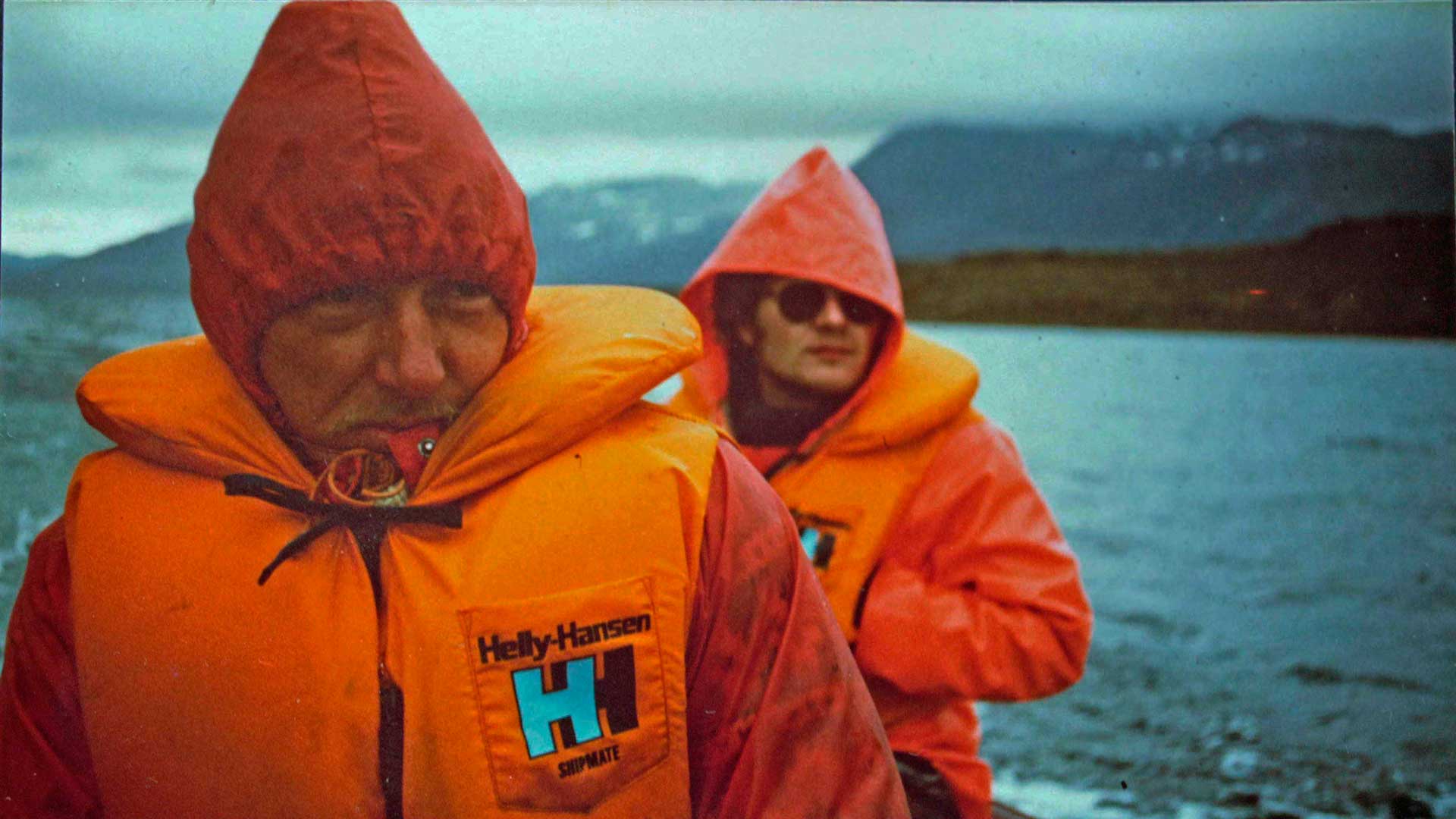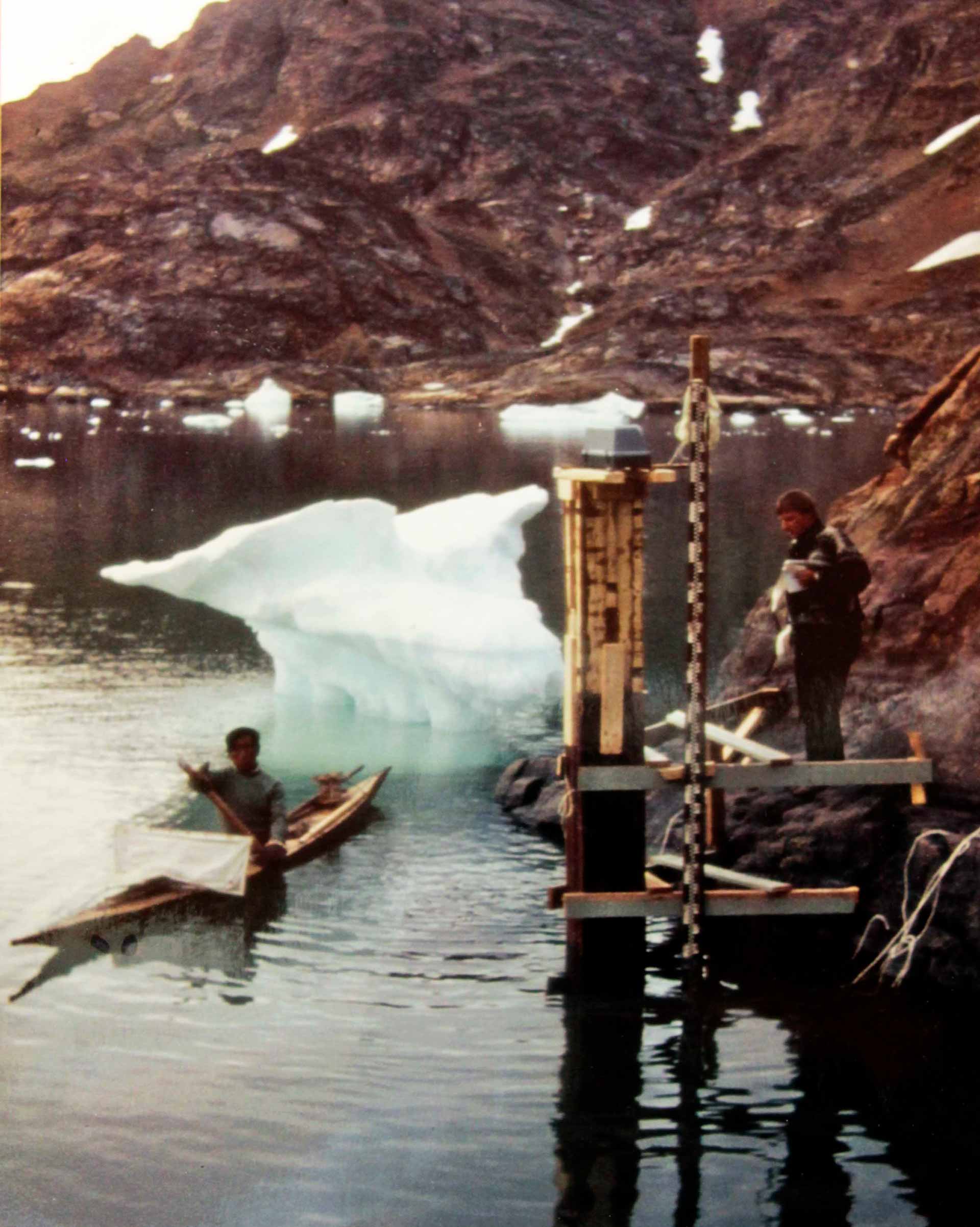In the 1970s, the geographer Bent Hasholt wanted to conduct research that mattered to society – so he started calculating rainfall in his free time.
Was researching sediment transport – ended up getting cheap electricity for all of Greenland

By Ole Ellekrog
In April of 1980 the Danish geographer Bent Hasholt ventured into a cabin near Tasiilaq in East Greenland to find a water level gauge. He was all alone, far from civilization – and scared to death. A few moments ago, leading straight to the hut, he had seen polar bear tracks.
Consequently, it was with great relief that he found the hut without polar bears and but with the water level gauge he was looking for. Not long after, the polar bear was shot and a couple of days later, Bent Hasholt put up his water level gauge in a lively river nearby.
So, despite the danger and the hard work that followed, Bent Hasholt is convinced that it was worth the effort. Because the water measurements back then played a significant role in making the greater part of Greenland self-sufficient in energy.
Bent Hasholt was in Greenland as a leader of the research station Sermilik – which he continued to be until 2009. But the project with the water level gauge which he started in 1980 did not actually have anything to do with his professional research.

The water level gauge that Bent Hasholt collected in a hut in 1980 and installed in a nearby river.
Photo: Bent Hasholt
That research was focused on measuring sediment transport from the meltwater of the close-by Mittivakkat glacier. The research was used by Bent Hasholt and his colleagues to gather fundamental knowledge on how rivers form and meander over time. But he missed being involved with research that also mattered to the society he lived in – research that could be used in real life.
“At the university, we already spoke at that point about also conducting research that would benefit society,” Bent Hasholt says.
The municipal board was interested
And Bent Hasholt’s research would, indeed, end up benefiting society. Because his measurements from the river were used to check if enough water ran through it to build a hydroelectric power plant by Tasiilaq.
Before that Bent had made a calculation that used data from rain gauges in the surrounding area and from a map from 1933. The calculation included factors such as rainfall levels, meltwater, cathment areas, and the drop of the water. In the end, the conclusion was clear: Enough water flowed through the streams for Tasiilaq to get its electricity usage covered entirely through hydro power.

As the water level gauge had been installed, the municipality had to warn citizens not to move it.
Photo: Bent Hasholt
Bent Hasholt published an article about this conclusion in the geographical journal Geografisk Tidsskrift and sent the article off to the municipal office in Tasiilaq. The municipal director was interested and, before long, Bent Hasholt had presented his plan to the municipal board. It was at this point that he was flown by helicopter to the hut nearby to get a water level gauge.
But despite the interest and the watertight calculations, it was not until 2004 that the hydroelectric power plant in Tasiilaq was opened. Long before the turn of the century, though, Bent Hasholt would help start a much larger Greenlandic hydroelectric power plant.
Expensive drops in Buksefjord
Grønlandsk Tekniske Organisation, the Danish government body in charge of Greenland’s power supply at the time, had heard of Bent Hasholt’s idea for a local hydroelectric power plant by Tasiilaq. They already had plans for larger hydroelectric power plants in other parts of Greenland. So, they hired him to make new calculations – first by Narsasuaq in South Greenland and later by Buksefjord south of Nuuk.
In 1981, he made the fundamental calculations for what, in 1993, would turn into the Buksefjord Hydroelectric Power Plant which supplies Nuuk with electricity today. Here, he put up rain gauges om different locations upstream from the power plant – and later picked up the rain drops by helicopter.

Bent Hasholt in action: In the process of installing a rainfall gauge with assistance from a helicopter.
Photo: Bent Hasholt
“Those were some expensive drops, but it was completely necessary to get an impression of whether there was enough water,” Bent Hasholt said.
And there was a specific reason that the Buksefjord Hydroelectric Power Plant was placed relatively far from Nuuk and needs a cable of 5,376 meters across the Ameralik fjord – the world’s longest free spanning power line.
”The reason was that there aren’t any glaciers in Buksefjorden. This means that we can expect the same amount of water, also in the future when the glaciers will melt away in other places. So, it was because of the stable amount of water that we chose the location in Buksefjorden,” Bent Hasholt said.
“Just in the time that I have observed it, the Mittivakkat Glacier has shrunk by 20 percent.”
– Bent Hasholt
Problems with melting glaciers
But while the Buksefjord Hydroelectric Power Plant gets the vast majority of its water from rain and snow, the same is not the case in Tasiilaq. Here, the power plant gets part of its water from small, local glaciers that are all disappearing.
“Just in the time that I have observed it, the Mittivakkat Glacier has shrunk by 20 percent and other glaciers in the area are also losing mass. And without the additional water from glaciers, we are nearing a point where the power plant in Tasiilaq alone cannot supply the town with electricity,” Bent Hasholt said.

Before it was installed in a river in 1980, the water level gauge had already been used for other purposes. Here, it’s seen in a photo from 1972.
Photo: Bent Hasholt
This problem, which has arisen due to global warming, was not something Bent Hasholt or anyone else were aware of when he made his calculations back in the 1970s. But, since then, Bent Hasholt has gotten an idea for how to solve the problem.
“You could grab some water from the Mittivakkat glacier by driving an excavator into the mountains and move a stream a little bit so that runs into the reservoir. That would add some extra hydroelectric power,” Bent Hasholt said.
Hydroelectric power for all of Greenland
Since Bent Hasholt made his first reports, large parts of Greenland has gotten access to hydroelectric energy. When Sisimiut, some years ago, also got a hydroelectric power plant, Bent Hasholt was also involved. And today, it is a goal for Nukissiorfiit, who are in charge of Greenland’s power supply, that all energy in the country should come from sustainable sources. This can only be achieved through the now multiple hydroelectric power plants.
And Bent Hasholt himself, who is now retired, will probably never completely stop calculating rainfall, catchment areas, and sediment transport.
In 2019, for instance, he was bored in the Kulusuk Airport by Tasiilaq. He glanced at a map of the area, and suddenly a new idea popped into his head. On the map, he noticed a small lake 200 meters above the airport.
As soon as he got back to the Department of Geosciences and Natural Resource Management at Copenhagen University, he started calculating how much rain and snow fell by Kulusuk and what the catchment area was. The result was clear: there was potential for a new hydroelectric power plant. So, he handed his calculations over to Nukissiorfiit.
“They said: ‘But we didn’t order that’. ‘No,’ I said: ‘You get that for free’.” Bent Hasholt recalls, laughing.
Last he heard, Nukissiorfiit was making a business case out of the calculations. Because lots of money can be saved by producing water energy with water instead of with diesel engines. Both in Kulusk and Tasiilaq but also in the rest of Greenland’s small communities. And it is even climate friendly.
“Those were some expensive drops, but it was completely necessary to get an impression of whether there was enough water.”
– Bent Hasholt
Therefore, Bent Hasholt believes that – in conjunction with his research in icebergs and sediment transport at the Sermilik research station – has achieved the goal he set himself back in the 1970s: He has benefited society with his research.
“We should produce all the hydroelectric power that we can when there is enough water to do so. So, I am happy to have done something locally for that cause,” Bent Hasholt said.